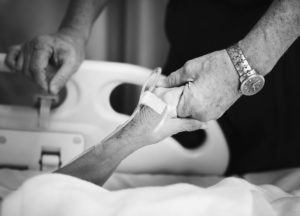
Pressure ulcers might be fairly common in hospitals and nursing homes, but they’re entirely preventable when healthcare providers reposition patients at regular intervals. When providers are negligent and patients develop bedsores, immediate treatment is necessary to prevent serious complications such as sepsis, cellulitis, and cancer. If you’re an attorney and representing a patient who suffered bedsores in a clinical setting, you may need a nursing care plan for pressure ulcers to prove the types of treatment your client will need to reach maximum medical improvement.
At Cardinal LifeCare Consulting, we can develop an objective, evidence-based pressure ulcer care plan that can serve as valuable evidence during settlement negotiations and litigation. We also provide medical expert witness services. Call 724-487-0519 to learn more.
What Is a Pressure Ulcer Nursing Care Plan?
A pressure ulcer nursing care plan is a comprehensive document outlining information about the patient, his or her medical diagnoses, suggested nursing interventions, justifications for these interventions, and the patient’s response to the listed interventions. These plans are developed based on accepted standards of care, the patient’s condition, data analysis, and the latest research.
The 4 Stages of Pressure Ulcers
When a patient’s skin is exposed to constant pressure or friction, the tissue begins to break down, causing lesions that expose the subdermal layers. These pressure ulcers tend to affect patients who are confined to hospital beds and wheelchairs. There are four different stages of pressure ulcers based on severity:
- Stage I: Sores are visible on the skin, but there are no breaks or tears.
- Stage II: Sores have broken through into the deeper layers of the skin.
- Stage III: Sores have expanded to the fat tissue, forming craters in the skin.
- Stage IV: Sores have dug deep enough to expose bone or muscle.
Common Interventions for Pressure Ulcers in Nursing Homes
While Stage I and Stage II pressure ulcers are relatively easy to treat, wounds in the latter stages can lead to serious complications such as sepsis and cancer. Patients receiving care for pressure ulcers in nursing homes will require round-the-clock attention to minimize pain, stave off infection, and prevent the ulcers from progressing.
These patients must be repositioned regularly. Healthcare providers can also place pillows between the patient’s legs, under his or her arms, and behind his or her back to minimize friction and pressure.
Nurses will need to ensure the patient is kept clean and dry as moisture can cause the skin to break down faster. Healthcare providers must also monitor the patient for any signs of infection. In some cases, the patient may require antibiotics.
Contact Cardinal LifeCare Consulting to Discuss Your Nursing Care Plan Needs
If you need a nursing care plan for a medical malpractice client who has suffered pressure ulcers, turn to Cardinal LifeCare Consulting. We create nursing care plans and life care plans based on objective, evidence-based guidelines derived from accepted standards of care. Contact us today at 724-487-0519 for a consultation.




